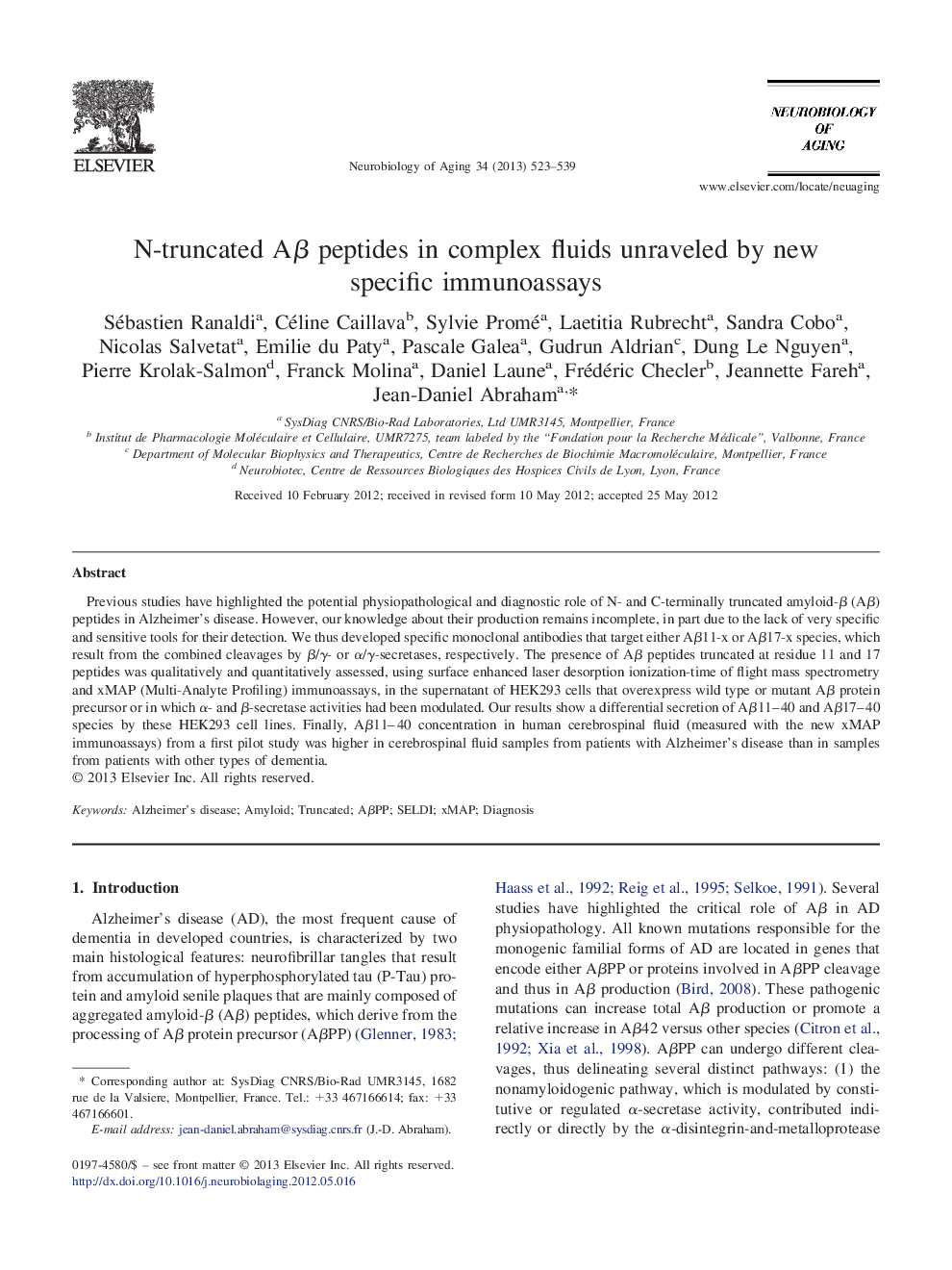| Article ID | Journal | Published Year | Pages | File Type |
|---|---|---|---|---|
| 330785 | Neurobiology of Aging | 2013 | 17 Pages |
Previous studies have highlighted the potential physiopathological and diagnostic role of N- and C-terminally truncated amyloid-β (Aβ) peptides in Alzheimer's disease. However, our knowledge about their production remains incomplete, in part due to the lack of very specific and sensitive tools for their detection. We thus developed specific monoclonal antibodies that target either Aβ11-x or Aβ17-x species, which result from the combined cleavages by β/γ- or α/γ-secretases, respectively. The presence of Aβ peptides truncated at residue 11 and 17 peptides was qualitatively and quantitatively assessed, using surface enhanced laser desorption ionization-time of flight mass spectrometry and xMAP (Multi-Analyte Profiling) immunoassays, in the supernatant of HEK293 cells that overexpress wild type or mutant Aβ protein precursor or in which α- and β-secretase activities had been modulated. Our results show a differential secretion of Aβ11–40 and Aβ17–40 species by these HEK293 cell lines. Finally, Aβ11–40 concentration in human cerebrospinal fluid (measured with the new xMAP immunoassays) from a first pilot study was higher in cerebrospinal fluid samples from patients with Alzheimer's disease than in samples from patients with other types of dementia.
